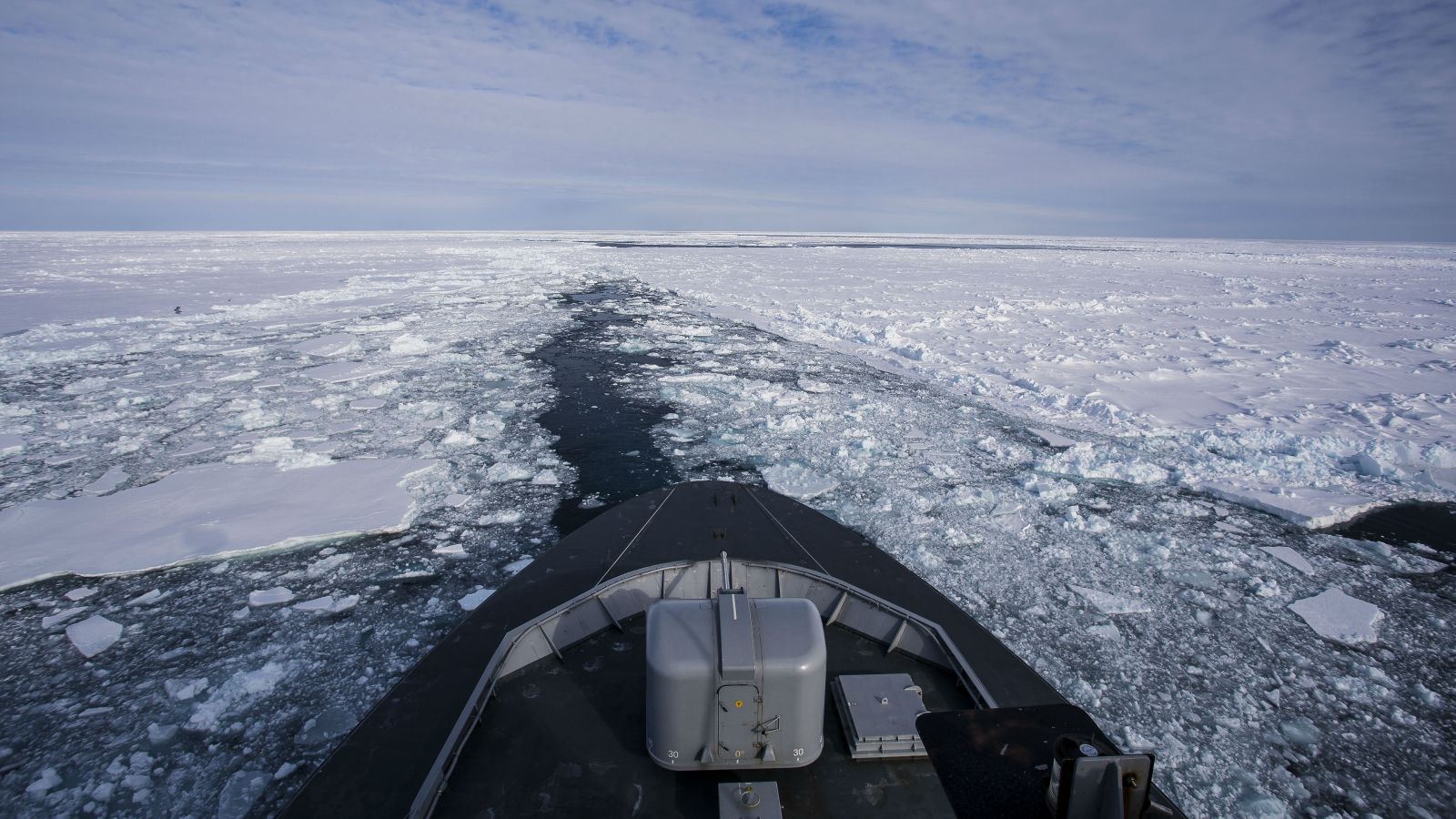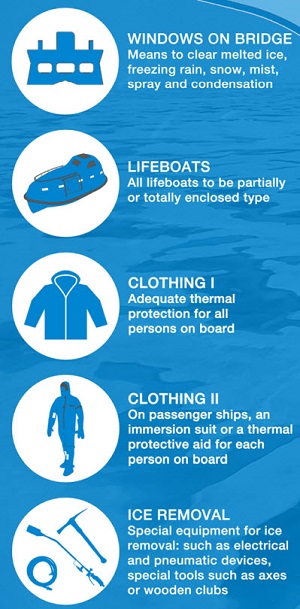Polar Code Builds on SOLAS, MARPOL and STCW

 The Polar Code enters into force on January 1, 2017, and the U.S. Coast Guard warns it is more complex than other Codes because it builds upon three conventions – SOLAS, several annexes of MARPOL and STCW.
The Polar Code enters into force on January 1, 2017, and the U.S. Coast Guard warns it is more complex than other Codes because it builds upon three conventions – SOLAS, several annexes of MARPOL and STCW.
The Polar Code applies to vessels which operate in polar waters including both those in Antarctica (south of 60oS) and those within the Arctic as specified in SOLAS Chapter XIV. The U.S. Arctic consists of all waters north of the 60th north parallel, starting from the western coast of Alaska, through the Etolin Straight toward Russia. The ports of Anchorage and Valdez, along with all other waters south and west of the Etolin Straight, are not within polar waters.
The Polar Code includes mandatory measures covering safety part (part I-A) and pollution prevention (part II-A) and recommendatory provisions for both parts.
The safety provisions of the Polar Code are incorporated by SOLAS Chapter XIV which states that vessels “operating in polar waters, certified in accordance with chapter I” must meet the Polar Code, Part I-A. All vessels on international voyages carrying one of the certificates listed in SOLAS Chapter I, must comply with the Polar Code while in polar waters.
U.S. flag vessels on domestic voyages through polar waters, or to ports or places in the U.S. Arctic, do not need to meet the provisions of Part I-A. However, vessels which are not required to comply with Part I-A are still encouraged to do so while operating in or near polar waters.
More information about the Polar Code for U.S. flag vessels is available here.
.jpg) DNV GL helps with compliance
DNV GL helps with compliance
DNV GL has issued guidance on how to comply with the Code and notes that the safety part of the Polar Code applies to ships certified under SOLAS, i.e. cargo ships of 500 GT or more and to all passenger ships. Ships constructed on or after January 1, 2017, shall comply with the safety part of Polar Code at delivery.
Ships constructed before January 1, 2017, shall comply with the safety part of the Polar Code by the first intermediate or renewal survey, whichever occurs first, after January 1, 2018.
.jpg) The safety part of the Code has design, construction, equipment, operational, training, search and rescue requirements related to the potential hazards of operating in polar regions, including ice, remoteness and severe and rapidly changing weather conditions. It is written in a goal based manner and provides both functional requirements and detailed requirements.
The safety part of the Code has design, construction, equipment, operational, training, search and rescue requirements related to the potential hazards of operating in polar regions, including ice, remoteness and severe and rapidly changing weather conditions. It is written in a goal based manner and provides both functional requirements and detailed requirements.
The environmental part of the Polar Code applies to all ships certified under MARPOL Annexes I, II, IV and V respectively. Existing and new ships certified under MARPOL shall comply with the environmental requirements by January 1, 2017. This means that fishing vessels (that carry MARPOL certificates) will also have to comply with the environmental part of the code, although not carrying any SOLAS certificates.
Cleanship Scandinavia advises on pollution prevention
Cleanship Scandanavia has prepared advice on the pollution prevention requirements of the Polar Code. Any discharge of oil or oily water is prohibited, and polar-specific requirements related to the discharge of sewage near ice have been set. Grey water is not covered under MARPOL or the Polar Code.
.jpg)
 LR guidance tool
LR guidance tool.jpg)
Lloyd’s Register offers compliance support and an interactive guidance tool for the Polar Code. The class society notes that Part IIA of the Code contains requirements that can usually be met with shipboard operations. Operators of ships and offshore assets in polar waters should ensure that existing procedures and manuals are updated to reflect Polar Code requirements by January 1, 2017.
Where operators choose to install new equipment (e.g. new garbage compactors to manage increased garbage retention on board) or designate new tanks for holding oil and oily mixtures, certification may need updating to reflect the modifications. Otherwise, there are no new certificates associated with compliance to Part IIA of the Code for existing ships. Existing manuals and procedures can be updated to meet the operational requirements in Part IIA.
